A friend who has started reading my blog commented that she would like to hear about dress for us mature women--that's a good idea, and while my education contains little in the way of fashion, I do have a very dear colleague with whom I worked with for decades who was our self-declared "fashion policewoman." She would like this inscription on her tombstone: She Was a Great Shopper. I personally plan to make sure that this happens--if I outlive her, that is. We are at that point in our lives: who will go first?
She and I had many a chuckle over the year at our colleagues' sartorial oddities. I remember a business school prof''s wife who showed up at a party heavily made up (makeup comes later on) and wearing (in the summer, mind you) a small red felt hat with an extraordinarily long white feather draped over her right raccoon-like eye, her small chubby feet stuffed into red high heels. Her dress was made of some kind of flowered taffeta. Since this was a garden party, perhaps she thought a hat and flowered frock were in order, but I am not sure why she decided on the heels. She stumbled through the garden, not making eye contact with anyone and only speaking when spoken to. We heard that she later divorced Jay--or did he divorce her? I can't remember now.
Then there was our dean. She had her strengths, both as an administrator and as a Renaissance French history scholar, but even her visits to France to archives there had done nothing to enhance her choices in clothing. A short woman, she was barrel-shaped, and she chose dresses and fifties-style suits that only accentuated her wide straight body. Her color choices also came from the fifties: burgundies, heavy navies, and sometimes deep spruce greens. When she interviewed for the job, my friend vowed she would take her shopping if she came to Salt Lake, but I don't think that their relationship ever evolved to that point. My friend advised dark neutral colors, bright jewelry, and more pants--not dresses. Maybe a charcoal gray tailored pantsuit with a bright scarf draped around the neckline, drawing attention to her clear skin and bright eyes, would have enhanced her appearance. Her feet were usually jammed into heels, and her hemlines came right at the knee. This had the unfortunate effect of highlighting her calves, which had absolutely no definition. They plummeted from knee to shoe in a line so straight it could have been drawn with a plumb line.
I find it interesting that women around the world, most of them, like fashion and try to express themselves through their appearances as best they can within the limits of their own cultures. I met the young women in the picture above at a medressa in Mostar, Bosnia, where I went a year and a half ago to lecture and give workshops on American women poets and their appropriation of Greek myths in their poems (H.D., Adrienne Rich, Harryette Mullen). Of course I had preconceptions and stereotypes of Muslim women. I knew that going there and tried to be open-minded, but I was surprised at the jewel tones of their hijabs. Though they wore no makeup and their hair was covered, yet they projected a clear sense of style and feminine beauty. (During my brief tour I thought about how Fox News would have reacted if they learned that the American Embassy in Sarajevo was spending our tax dollars to send lecturers to Muslim schools and universities.) And when I taught in Sofia, Bulgaria, in 2002, when the average income per capita was $64 a month, I could not believe how many fancy underwear boutiques and cosmetics shops lined the streets. I had brought lipsticks with me from the States, but the month before I went home I ran out and had to purchase one. The cheapest one I could find was 40 lev ($20)--wow! I could have doubled my Fulbright stipend by filling my suitcase up with lipsticks from Rite Aid and hawking them on the university's wide stone steps. . ..
I really like clothes and fabric, like many women around the world, though I am opposed to spending a third of my monthly income on a small tube of lipstick. (When I think about it now, I think my Balkan friends' desire to make themselves look beautiful was a sign of hope in an economy that had been stricken when Communism collapsed all over Eastern Europe.) I think I acquired this penchant for fashion because my grandmother Ruby, who lived with us when I was growing up, had been the town seamstress. She still did lots of sewing after her retirement, and she taught me to sew on a treadle machine and to knit by the time that I started elementary school. I loved to go into her room, which was on the ground floor of my great-grandfather's house, on the northwest corner of the house next to the stairs. She had big tall windows with wavering glass panes, so there was abundant light in the room, and when she opened the window next to her bed in the spring the smell of the lilies of the valley that grew beneath a spruce tree wafted into her room.She had a chest of drawers along the wall where her headboard rested and another, taller chest of drawers on the wall next to her closet, which had a heavy damask curtain draped in front of it. Grandma had little money, and I remember that when she developed back problems in her seventies, my aunt Elizabeth Gerkin (assistant to the president at Dry Dock Savings Bank in New York and a graduate of Smith) sent her $200 for a nice mattress.
Her tall chest of drawers housed nothing but fabric; I loved to finger through the folded cloth and dream about what I could make. She used her scraps to fashion doll and baby clothes. I still have a small metal red steamer trunk that holds my Madame Alexander doll, Jo of Little Women, along with the clothes that my grandmother made for her: a pale blue watered silk cloak with a hood trimmed in white lace, a red satin ball gown with black velvet ribbons, and a green cotton frock for summer days. The trunk even had a drawer at the bottom that held extra shoes. Since I have three granddaughters now it will be hard to decide where Jo goes, though right now for some obscure reason I like to think that she is in the attic over our garage, waiting for me to take her down and change her clothes. I haven't done that in a decade. Right now it is just too cold to go to the garage but perhaps in spring I will remember that she is there and look at her again.
By age nine or ten I was able to sew clothes for my Barbie doll. I don't remember having any attachment to this doll other than that she provided me an opportunity to make something. I designed her clothes and then put them together, making one unique outfit after another. (I don't remember that I wanted to make anything for Ken--he seemed boring to me, and I couldn't think of anything I would like to design for him. I never saw him as anything other than a prop for Barbie. . .. ). I loved to make things: stories, plays, architectural drawings, pictures, even jewelry out of sea shells (my first cousin and I used to fight, and once she delivered the ultimate blow: she called me "a stupid old jewelry maker"!). By age twelve I could knit rather competently. My first project was a sweater for my grandmother, made in a lime green acrylic yarn I had purchased at Woolworth's. It had three-quarter length sleeves and cables down the front: it looked quite finished. There was only one problem: it was way too big for my grandmother. Now, you need to know my grandmother's build: she was 5' 10" and weighed well over 200 pounds. That this sweater was too big meant that I must have purchased all the yarn Woolworth's had in stock of this particular color. Naturally she professed to be thrilled with my gift. I think she even wore it occasionally, on top of another sweater no doubt.
I still like clothes, though I find now as I am only working part-time plus I live in a very informal community where many people spend most of their clothing dollars on outdoor gear, summer and winter, I don't really need many outfits. Some of my best buys have been at thrift stores here: the three dollar gorgeous handknit heavy wool sweater; a black cardigan with brightly colored appliques of frogs, birds, and dragonflies from a New York boutique; and a very puffy ski vest made out of muted watercolor fabric that looks like parachute silk. I still love to knit sweaters, but after all these years of knitting I still have trouble with the fit. I do best making top-down sweaters for myself (I knit them from the top down, so I can adjust for my long arms and torso), and for children. Since my creations are still too big, I figure eventually my granddaughters will grow into them.
I must confess that I love to look at fashion magazines, and I get Harper's Bazaar delivered, along with the Henry James Review, Atlantic Monthly and a couple of poetry journals. Harper's has a section toward the back on clothing choices for women of various ages, starting with teens and going -- imagine!-- to the eighties. In one issue they recommended purple for those of us in our sixties. Gasp--and it was bright purple, too. We need to stand out, they pronounced. But not that much.
As I have been running, my legs are still strong enough that I can wear skirts, but I have to wear tights or pantyhouse with them. 1) I am too lazy to shave my legs in the winter; 2) I have some pronounced veins, "beauty spots," all that jazz. I even show up at water aerobics in a bathing suit, but since we are all under the water no one can see what I have--or don't have.
I find I do better with muted colors, grays, blacks, browns. I love white and cream, but I spill: wine, coffee, chocolate sauce. Doesn't work.
Hillary has freed us from the notion that we have to have short hair--thank you very much--so mine is longer, though I am ready to cut it. I get a platinum weave in my hair about every five months, but I think I need to let go of that--it is expensive and time-consuming, and I am not sure it is working, anyway. Make up is another issue, but if I go somewhere like Macy's or Nordstrom's for makeup, most of the women at the counters are very young and don't seem to have any particular training in making up grandmothers. There has to be a market for this: makeup and makeup consultants for that euphemism, "mature woman."
Don't you love it!? i never knew when I lived at my house at 622 North Second Street, Titusvillle, PA, that I was destined to become a "mature woman." If I ever heard that term, I probably equated it with a prostitute or something.
How old we grow and how little we know.
Signing off for next time--
Yours in sartorial bewilderment,
Susan
P.S. I must close in haste, as I am off to Nordstrom's Rack with my favorite retail companion, the fashion policewoman, to shop for that wardrobe essential, black jeans.
She and I had many a chuckle over the year at our colleagues' sartorial oddities. I remember a business school prof''s wife who showed up at a party heavily made up (makeup comes later on) and wearing (in the summer, mind you) a small red felt hat with an extraordinarily long white feather draped over her right raccoon-like eye, her small chubby feet stuffed into red high heels. Her dress was made of some kind of flowered taffeta. Since this was a garden party, perhaps she thought a hat and flowered frock were in order, but I am not sure why she decided on the heels. She stumbled through the garden, not making eye contact with anyone and only speaking when spoken to. We heard that she later divorced Jay--or did he divorce her? I can't remember now.
Then there was our dean. She had her strengths, both as an administrator and as a Renaissance French history scholar, but even her visits to France to archives there had done nothing to enhance her choices in clothing. A short woman, she was barrel-shaped, and she chose dresses and fifties-style suits that only accentuated her wide straight body. Her color choices also came from the fifties: burgundies, heavy navies, and sometimes deep spruce greens. When she interviewed for the job, my friend vowed she would take her shopping if she came to Salt Lake, but I don't think that their relationship ever evolved to that point. My friend advised dark neutral colors, bright jewelry, and more pants--not dresses. Maybe a charcoal gray tailored pantsuit with a bright scarf draped around the neckline, drawing attention to her clear skin and bright eyes, would have enhanced her appearance. Her feet were usually jammed into heels, and her hemlines came right at the knee. This had the unfortunate effect of highlighting her calves, which had absolutely no definition. They plummeted from knee to shoe in a line so straight it could have been drawn with a plumb line.
I find it interesting that women around the world, most of them, like fashion and try to express themselves through their appearances as best they can within the limits of their own cultures. I met the young women in the picture above at a medressa in Mostar, Bosnia, where I went a year and a half ago to lecture and give workshops on American women poets and their appropriation of Greek myths in their poems (H.D., Adrienne Rich, Harryette Mullen). Of course I had preconceptions and stereotypes of Muslim women. I knew that going there and tried to be open-minded, but I was surprised at the jewel tones of their hijabs. Though they wore no makeup and their hair was covered, yet they projected a clear sense of style and feminine beauty. (During my brief tour I thought about how Fox News would have reacted if they learned that the American Embassy in Sarajevo was spending our tax dollars to send lecturers to Muslim schools and universities.) And when I taught in Sofia, Bulgaria, in 2002, when the average income per capita was $64 a month, I could not believe how many fancy underwear boutiques and cosmetics shops lined the streets. I had brought lipsticks with me from the States, but the month before I went home I ran out and had to purchase one. The cheapest one I could find was 40 lev ($20)--wow! I could have doubled my Fulbright stipend by filling my suitcase up with lipsticks from Rite Aid and hawking them on the university's wide stone steps. . ..
I really like clothes and fabric, like many women around the world, though I am opposed to spending a third of my monthly income on a small tube of lipstick. (When I think about it now, I think my Balkan friends' desire to make themselves look beautiful was a sign of hope in an economy that had been stricken when Communism collapsed all over Eastern Europe.) I think I acquired this penchant for fashion because my grandmother Ruby, who lived with us when I was growing up, had been the town seamstress. She still did lots of sewing after her retirement, and she taught me to sew on a treadle machine and to knit by the time that I started elementary school. I loved to go into her room, which was on the ground floor of my great-grandfather's house, on the northwest corner of the house next to the stairs. She had big tall windows with wavering glass panes, so there was abundant light in the room, and when she opened the window next to her bed in the spring the smell of the lilies of the valley that grew beneath a spruce tree wafted into her room.She had a chest of drawers along the wall where her headboard rested and another, taller chest of drawers on the wall next to her closet, which had a heavy damask curtain draped in front of it. Grandma had little money, and I remember that when she developed back problems in her seventies, my aunt Elizabeth Gerkin (assistant to the president at Dry Dock Savings Bank in New York and a graduate of Smith) sent her $200 for a nice mattress.
Her tall chest of drawers housed nothing but fabric; I loved to finger through the folded cloth and dream about what I could make. She used her scraps to fashion doll and baby clothes. I still have a small metal red steamer trunk that holds my Madame Alexander doll, Jo of Little Women, along with the clothes that my grandmother made for her: a pale blue watered silk cloak with a hood trimmed in white lace, a red satin ball gown with black velvet ribbons, and a green cotton frock for summer days. The trunk even had a drawer at the bottom that held extra shoes. Since I have three granddaughters now it will be hard to decide where Jo goes, though right now for some obscure reason I like to think that she is in the attic over our garage, waiting for me to take her down and change her clothes. I haven't done that in a decade. Right now it is just too cold to go to the garage but perhaps in spring I will remember that she is there and look at her again.
By age nine or ten I was able to sew clothes for my Barbie doll. I don't remember having any attachment to this doll other than that she provided me an opportunity to make something. I designed her clothes and then put them together, making one unique outfit after another. (I don't remember that I wanted to make anything for Ken--he seemed boring to me, and I couldn't think of anything I would like to design for him. I never saw him as anything other than a prop for Barbie. . .. ). I loved to make things: stories, plays, architectural drawings, pictures, even jewelry out of sea shells (my first cousin and I used to fight, and once she delivered the ultimate blow: she called me "a stupid old jewelry maker"!). By age twelve I could knit rather competently. My first project was a sweater for my grandmother, made in a lime green acrylic yarn I had purchased at Woolworth's. It had three-quarter length sleeves and cables down the front: it looked quite finished. There was only one problem: it was way too big for my grandmother. Now, you need to know my grandmother's build: she was 5' 10" and weighed well over 200 pounds. That this sweater was too big meant that I must have purchased all the yarn Woolworth's had in stock of this particular color. Naturally she professed to be thrilled with my gift. I think she even wore it occasionally, on top of another sweater no doubt.
I still like clothes, though I find now as I am only working part-time plus I live in a very informal community where many people spend most of their clothing dollars on outdoor gear, summer and winter, I don't really need many outfits. Some of my best buys have been at thrift stores here: the three dollar gorgeous handknit heavy wool sweater; a black cardigan with brightly colored appliques of frogs, birds, and dragonflies from a New York boutique; and a very puffy ski vest made out of muted watercolor fabric that looks like parachute silk. I still love to knit sweaters, but after all these years of knitting I still have trouble with the fit. I do best making top-down sweaters for myself (I knit them from the top down, so I can adjust for my long arms and torso), and for children. Since my creations are still too big, I figure eventually my granddaughters will grow into them.
I must confess that I love to look at fashion magazines, and I get Harper's Bazaar delivered, along with the Henry James Review, Atlantic Monthly and a couple of poetry journals. Harper's has a section toward the back on clothing choices for women of various ages, starting with teens and going -- imagine!-- to the eighties. In one issue they recommended purple for those of us in our sixties. Gasp--and it was bright purple, too. We need to stand out, they pronounced. But not that much.
As I have been running, my legs are still strong enough that I can wear skirts, but I have to wear tights or pantyhouse with them. 1) I am too lazy to shave my legs in the winter; 2) I have some pronounced veins, "beauty spots," all that jazz. I even show up at water aerobics in a bathing suit, but since we are all under the water no one can see what I have--or don't have.
I find I do better with muted colors, grays, blacks, browns. I love white and cream, but I spill: wine, coffee, chocolate sauce. Doesn't work.
Hillary has freed us from the notion that we have to have short hair--thank you very much--so mine is longer, though I am ready to cut it. I get a platinum weave in my hair about every five months, but I think I need to let go of that--it is expensive and time-consuming, and I am not sure it is working, anyway. Make up is another issue, but if I go somewhere like Macy's or Nordstrom's for makeup, most of the women at the counters are very young and don't seem to have any particular training in making up grandmothers. There has to be a market for this: makeup and makeup consultants for that euphemism, "mature woman."
Don't you love it!? i never knew when I lived at my house at 622 North Second Street, Titusvillle, PA, that I was destined to become a "mature woman." If I ever heard that term, I probably equated it with a prostitute or something.
How old we grow and how little we know.
Signing off for next time--
Yours in sartorial bewilderment,
Susan
P.S. I must close in haste, as I am off to Nordstrom's Rack with my favorite retail companion, the fashion policewoman, to shop for that wardrobe essential, black jeans.
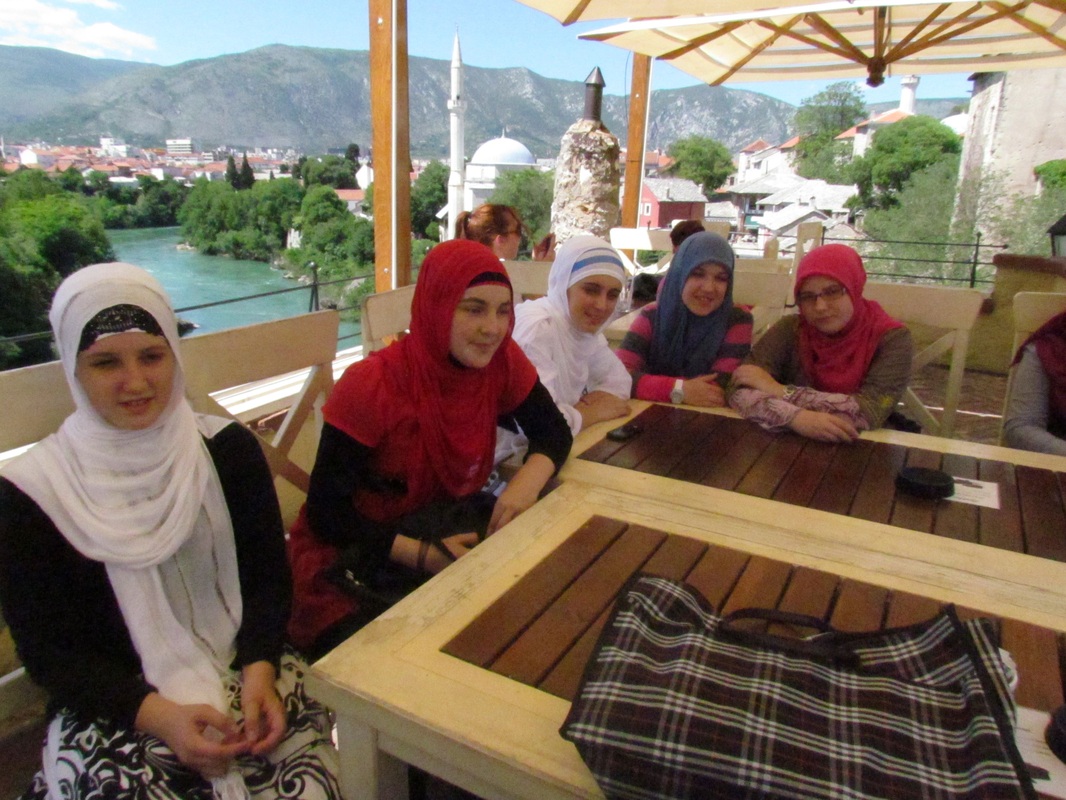
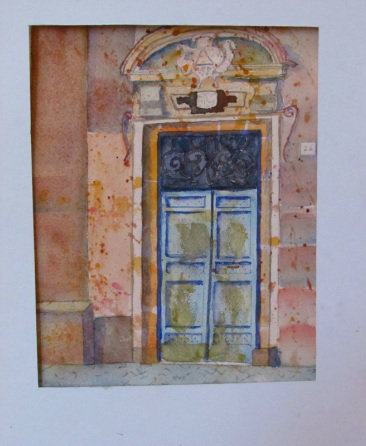
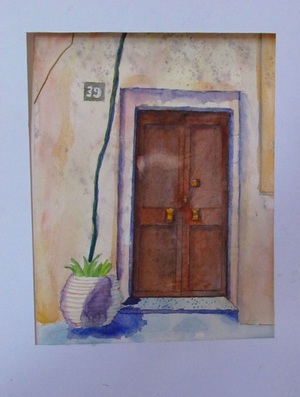
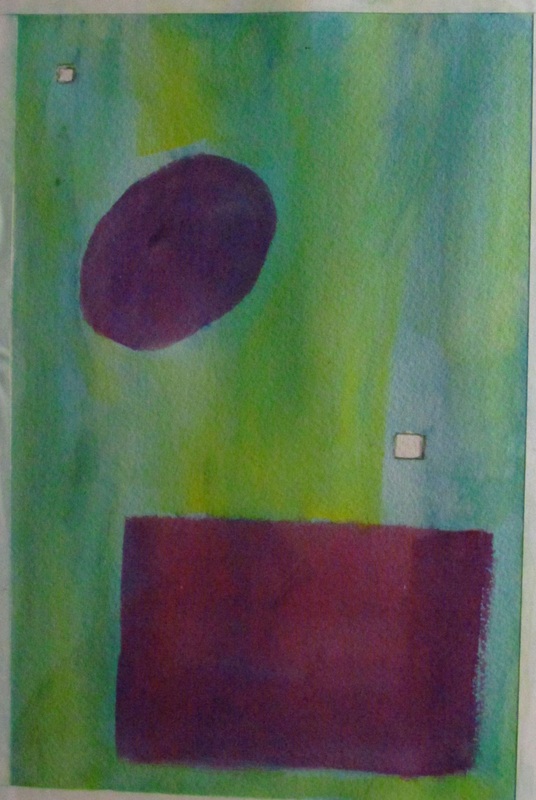
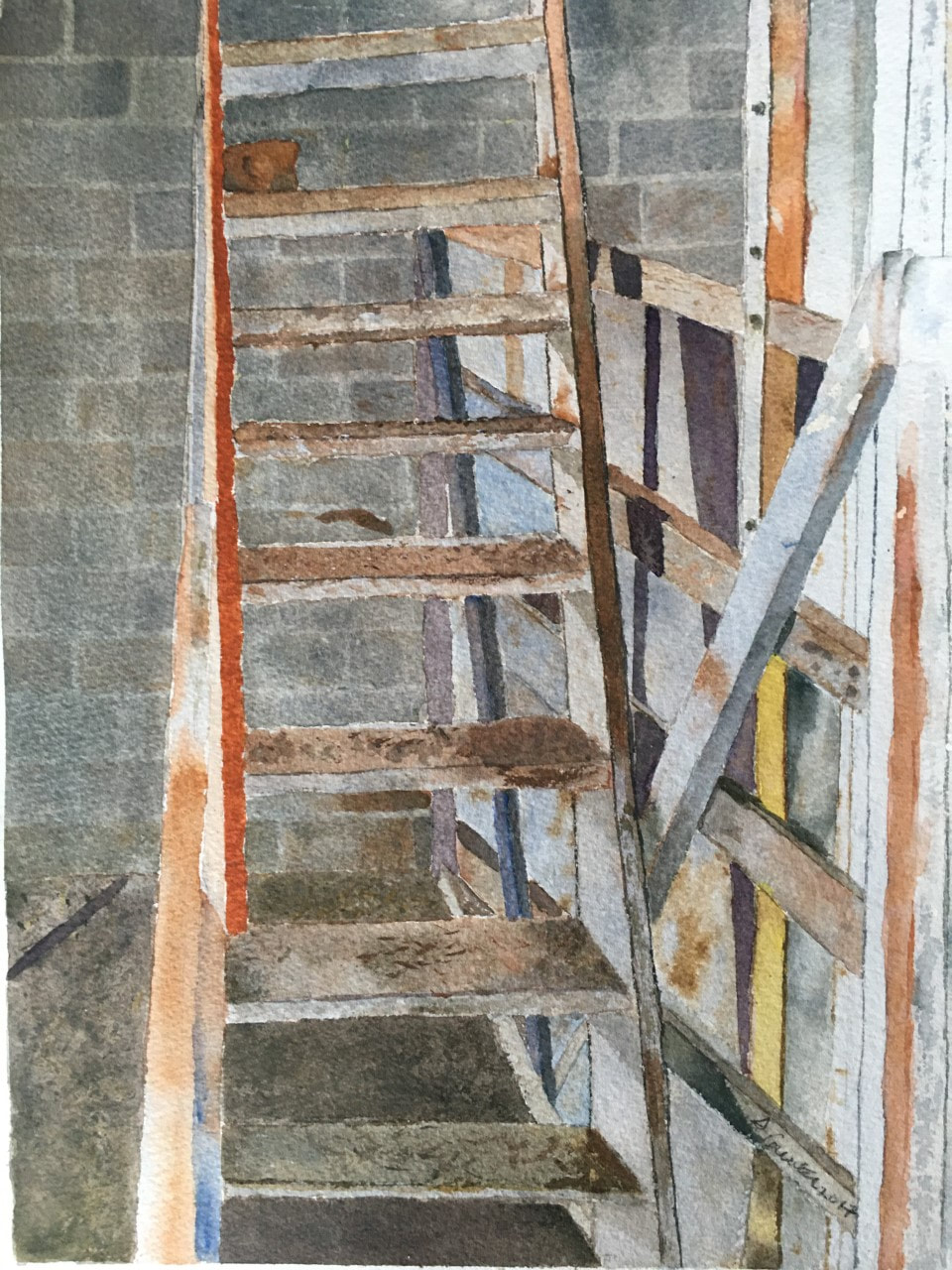
 RSS Feed
RSS Feed